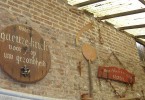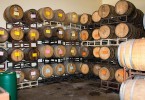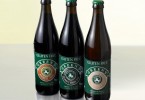A comeback to the origins with natural beer
Natural beer, as the people drunk it in the past.Natural beer represents a comeback to the origins towards the ancient art of the production of this tasty product, appreciated all over the world.
Natural beer: a refill of aromas and ancient tastes
The origin of the beer can be dated back to the Egyptians, Babylonians, Celts and Assyrians. It seems that the first experiments have been taken by agricultural civilization. The ingredients come from the soil, in particular the cereals. At the beginning the beer was light and it was drunk during the meals. During the Medieval period, using what people knew about beer, people tested new systems till they obtained a complex product. The Trappist monks produced a natural beer, more complex, in the monastery and they were able to obtain a product similar to the one that we drink today.

Some steps to produce natural beer
The production of beer start from the selection of the best cereals. Barley and wheat aren’t the only one used to produce natural beer, there is alo rye, spelt, oat, etc. are all used to produce craft beer. Then the hop, that give aroma, it has to be of the best quality, as the aroma is fundamental.
The process foresees the maceration of the cereals in the water to absorb the humidity. The process lasts around 50 hours. The second step is the germination of the conditions. The radicle is developed thanks to the water absorbed, when this last doubled the length of the seed, it is possible to go on to the next phase. The drying allow to dry the cereals till when it is possible carry out the roasting. From this phase derives the colour of the beer. At 85°C it would result a clear malt. At 200° it is possible to obtain dark malts. Thus, now it is the right moment to go to the grinding phase, to obtain the flour to which hot water will be added to start the mashing phase.
The must is filtered and cooked to favour the concentration. Once ready, add the yeast for a tumultuous fermentation, to transform the glucose into carbon dioxide and alcohol.
The yeast has to be natural, it means that it doesn’t derives from chemical treatment. It is ideal, the residual yeast that derives from other process to produce craft beer. The typical note of bread crust is given by this.
Final phase: bottling without pasteurization
The next phase foresees a secondary fermentation in the bottle. The carbon dioxide continue to grow thanks to the residual sugar. The yeast is blocked by carbon dioxide and it sediments on the bottom of the bottle. When industrial beer is bottled, preservatives are added, like for instance ascorbic acid and other enzymes that have an anti-oxidant function. This allow to preserve the beer from the jump of temperature and the time. The craft production doesn’t have the same volumes of the industrial ones. Natural beer has still the yeasts and it is not filtered. It is bottled in the wild.
Unique sensation and authentic taste

The sensations that you can feel tasting a natural beer are always stuck in the mind. Natural beer is tasted slowly, without rush. The palate has to be tickled by multiple aromas, once tasted it is difficult to forget its taste. A beer, quite rough, reveal all its deep essence. It talks about the hard work and love of the brew master. Bread crust, mineral and fruity notes released sip by sip.
Sometimes barley and wheat are added corn, rice and mile. This is a typical custom of the eastern part of the world, in order to produce something even more complex, with thousands of shades. The human being, after tasting the modernization, has the instinct of getting back to the ancient tastes.







